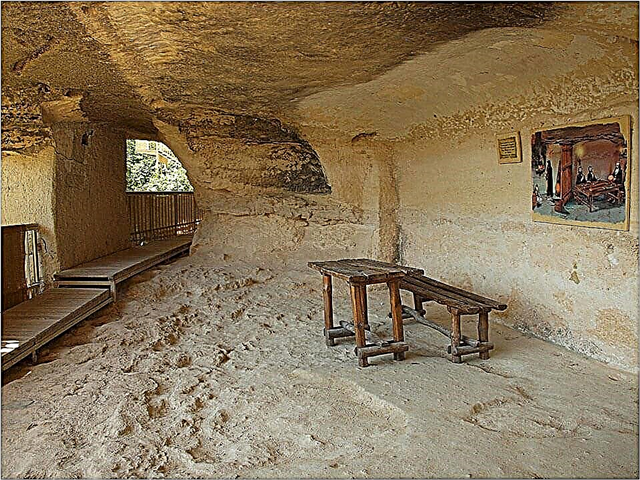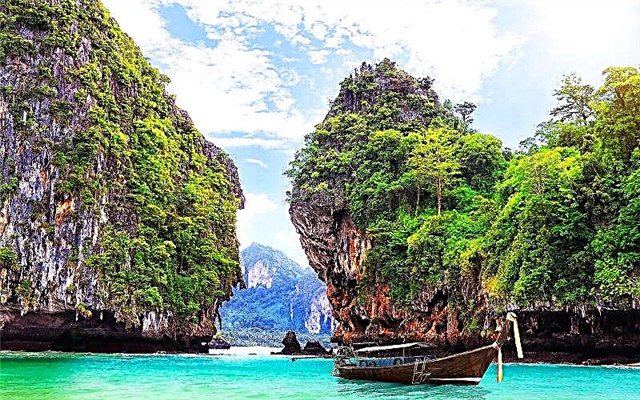Delightful, ancient, hot Mexico is as if created in order to enjoy every day of your stay in it. The country where in the old days lived the amazing and mysterious civilizations of the Maya and Aztec Indians, today it blooms and sings on the ruins of old ruins, paying tribute to the memory of a forever bygone culture. An appeal to ancient legends and myths is a favorite theme of most colorful Mexican festivals.
Giant pyramids and amusement parks, luxurious palace buildings and high fortress walls, vibrant tropical greenery and turquoise waves billowing surfers to the skies, golden sandy beaches and majestic Catholic cathedrals, five-star hotels and ancient museums - modern Mexico has it all!

The best hotels and hotels at affordable prices.
from 500 rubles / day
What to see in Mexico?
The most interesting and beautiful places, photos and a short description.
Chichen Itza
Founded in the 7th century A.D. the sacred city of one of the Mayan tribes - Itza is located one hundred and twenty kilometers from the capital of the Yucatan Peninsula. The architectural wealth of the ancient settlement is made up of the nine-step Temple of Kukulkan and two small temples - Warriors and Jaguars, a well used for sacrifices, a huge ball court and a giant rectangle formed from the ruins of columns.

Mexico City Cathedral
The main Catholic temple of the Mexican capital was built on the site of the former Aztec sanctuary dedicated to the god of war - Huitzilopochtli. The construction of the cathedral was carried out from the beginning of the 16th to the beginning of the 19th century. Combining the architectural features of the Baroque, Renaissance and Neoclassicism, the temple was erected in honor of the Assumption of the Most Holy Theotokos.

National Museum of Anthropology
One of the richest museums in Mexico is located in Chapultepec Park (Mexico City). It consists of two large departments - archaeological and ethnographic. The exposition of the museum is represented by exhibits of the pre-Columbian era, which include the famous Aztec calendar - the Stone of the Sun, treasures of the Mayan tribe and cultural and archaeological finds belonging to other ancient Mexican civilizations.

Chapultepec Palace
Chapultepec Palace, founded in 1785, has long been used as a government residence. At one time it housed a military academy and the National Astronomical Observatory. Since 1939, the main exhibition of the National Historical Museum has been exhibited in a stately neoclassical building.

Copper canyon
The main national park of the country got its name from the moss that grows on the slopes of a one and a half kilometer canyon and shines from a distance with copper. The bottom of this natural landmark is covered with subtropical forests. The Copper Canyon is home to a third of all Mexican animals, among which you can find a black bear, a Mexican wolf and a cougar.

Acapulco
Located on the Pacific coast, the resort and part-time "night capital" of Mexico gained worldwide fame in the fifties of the XX century. Modern Acapulco is a city of gentle sandy beaches, water attractions, fishing, the best discos in the country and constant thirty degrees Celsius both in winter and in summer.

Park Xcaret
Spread over an area of eighty hectares, the Caribbean amusement park is at the same time a free habitat for a large number of wild animals. Numerous beaches, a turtle farm, a butterfly park, an underground river journey and nightly performances about the history of ancient civilizations make Shkaret a favorite vacation spot for both children and adults.

Pyramids of Teotihuacan
The oldest city in the Western Hemisphere, whose foundation date raises questions even among experienced archaeologists, is located fifty kilometers from Mexico City. Its two pyramids - the Moon and the Sun - are the main historical sights of the ancient settlement. The remains of sacrificed people and animals were found in the pyramid of the moon. The Pyramid of the Sun is a large-scale structure almost sixty-five meters high.

Cenotes on the Yucatan Peninsula
Natural limestone wells filled with underground waters were used by the Maya Indians as places for collecting water and sacrifices. Cenotes were considered the gateway to the Kingdom of the Dead and belonged to the category of sacred objects. Today, a number of natural wells in Yucatan are a favorite dive site for diving enthusiasts.

Mescaltitan Island
Reaching a diameter of four hundred meters, the island is entirely built up with white and pink rows of houses that can accommodate no more than a thousand permanent residents. The legendary homeland of the Aztecs and the Mexican national drink mezcal, it is currently engaged in fishing and shrimp fishing. Once a year, Mescaltitan hosts a ship regatta and a festival dedicated to Saints Peter and Paul.

San Francisco de Campeche
The capital of the state of Campeche was founded by the Spanish conquistadors in 1540 on the site of an ancient Mayan settlement. Located in the west of Yucatan, the city still looks like a fortress built in it in the 16th-18th centuries to protect it from pirates. The main attractions of San Francisco de Capeche are the forts, the botanical garden and the Franciscan Cathedral.

Mayan city Tulum
Tulum differs from other Mayan cities by its high wall, built by the Indians to protect against the raids of northern nomadic peoples. The most massive urban structure, located closest to the sea - the temple and fortress of El Castillo, according to the assumptions of archaeologists, could serve as a lighthouse. The temple of frescoes is a clear evidence of the ancient perception of the world, dividing reality into the underground (death), earthly (life) and heavenly (gods).

Palenque
A huge number of ruins, located on an area of fifteen square kilometers, testify to the former greatness of the ancient Mayan city - Lakam-ha. The modern name of the complex - Palenque - was given to it by the Spanish conquerors. The center of the ancient architectural composition is the Palace, which consists of several large and small courtyards. Three pyramid-temples (the Sun, the Cross and the Deciduous Cross) symbolize the ceiba tree, which, according to Indian legends, holds the entire Universe.

Palace of Fine Arts
The main opera house of the Mexican capital was built in the first third of the 20th century by the Italian architect A. Boari. Carrara marble walls and lush Art Deco décor make this building one of the most beautiful structures in the New World. The Palais des Beaux-Arts is home to Diego Rivera's famous fresco, At the Crossroads.

Museum of underwater sculptures
Created by British sculptor Jason de Cairos Taylor, the unusual underwater museum can be called one of the most expensive in terms of visits - the price of a ticket to it fluctuates around one hundred dollars. The art installation of four hundred modern objects is divided into three parts and is available for review by anyone who knows how to use scuba diving.

Dead dolls island
A tiny island located in the south of Mexico City turned into the last resting place of dolls by accident, when a hermit who lived on it in the middle of the last century found a toy of a drowned girl in the river and hung it on a tree. Over time, the man began to collect dolls and decorate the island with them. Today, sunburned and insect-worn toys give the area an eerie, surreal look.

Cancun
Growing out of a fishing village, a large Mexican resort is loved by tourists from all over the world. In Cancun, the daytime temperatures never drop below twenty-four degrees, and the beaches located on it are distinguished by the cleanliness and richness of waves, so necessary for surfing. Five-star hotels and a developed infrastructure of the resort allow you to relax in Cancun with maximum convenience.

Crystal Giant Cave
Huge gypsum crystals began to form in a cave near Chihuahua City about twenty-six million years ago. Growing at one hundred percent humidity and a temperature of fifty-eight degrees Celsius, "rays" weigh several tens of tons and reach a length of eleven meters.

Xplor amusement park
Xplor's seven extreme activities include river and cavern rafting, cable car rides, jungle buggy rides and hammock rides. Professional instructors closely monitor the holidaymakers and help them overcome obstacles. An additional safety and tracking device is a helmet with a built-in microchip.

House-Museum of Leon Trotsky
The house in the Coyoacan area, where Leon Trotsky spent his last days and was killed in 1940, was turned into a museum in 1990. The building, located at the corner of Rio Churubusco and Viena, houses a temporary display of documents and a public library owned by a Soviet communist.












